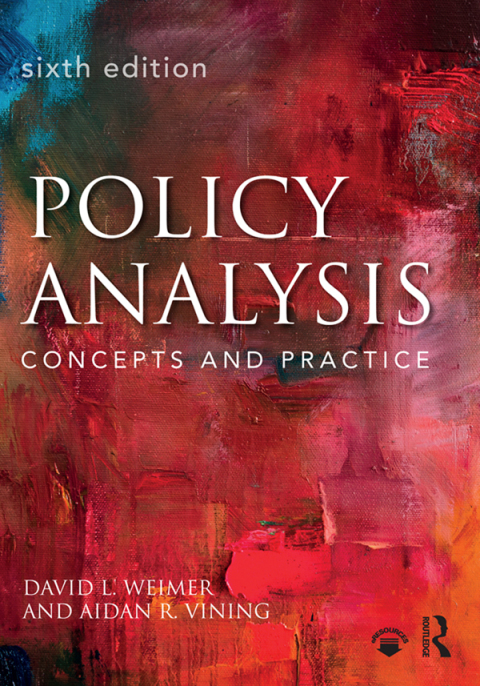Description
Efnisyfirlit
- Cover
- Half Title
- Title
- Copyright
- Dedication
- Contents
- Detailed Table of Contents
- List of Figures
- List of Tables
- List of Boxes
- Preface
- Acknowledgments
- PART I Introduction to Public Policy Analysis
- 1 Preview
- Reducing the U.S. Kidney Transplant Shortage
- Debriefing
- Write to Your Client
- Understand the Policy Problem
- Be Explicit About Values
- Specify Concrete Policy Alternatives
- Predict and Value Impacts
- Consider the Trade-Offs
- Make a Recommendation
- For Discussion
- 2 What Is Policy Analysis?
- Policy Analysis in Perspective
- Policy Analysis as a Profession
- A Closer Look at Analytical Functions
- Basic Preparation for Policy Analysis
- For Discussion
- 3 Toward Professional Ethics
- Analytical Roles
- Value Conflicts
- Ethical Code or Ethos?
- For Discussion
- PART II Conceptual Foundations for Problem Analysis
- 4 Efficiency and the Idealized Competitive Model
- The Efficiency Benchmark: The Competitive Economy
- Market Efficiency: The Meaning of Social Surplus
- Caveats: Models and Reality
- Conclusion
- For Discussion
- 5 Rationales for Public Policy: Market Failures
- Public Goods
- Externalities
- Natural Monopoly
- Information Asymmetry
- Conclusion
- For Discussion
- 6 Rationales for Public Policy: Other Limitations of the Competitive Framework
- Thin Markets: Few Sellers or Few Buyers
- The Source and Acceptability of Preferences
- The Problem of Uncertainty
- Intertemporal Allocation: Are Markets Myopic?
- Adjustment Costs
- Macroeconomic Dynamics
- Conclusion
- For Discussion
- 7 Rationales for Public Policy: Distributional and Other Goals
- Social Welfare beyond Pareto Efficiency
- Substantive Values Other Than Efficiency
- Some Cautions in Interpreting Distributional Consequences
- Choosing Distributional Values
- Instrumental Values
- Conclusion
- For Discussion
- 8 Limits to Public Intervention: Government Failures
- Problems Inherent in Direct Democracy
- Problems Inherent in Representative Government
- Problems Inherent in Bureaucratic Supply
- Problems Inherent in Decentralization
- Conclusion
- For Discussion
- 9 Policy Problems as Market and Government Failure: The Madison Taxicab Policy Analysis Example
- Postscript: Technology Makes the 24/7 Rule Irrelevant
- The Relationship between Market and Government Failures
- Conclusion
- For Discussion
- PART III Conceptual Foundations for Solution Analysis
- 10 Correcting Market and Government Failures: Generic Policies
- Freeing, Facilitating, and Simulating Markets
- Using Subsidies and Taxes to Alter Incentives
- Establishing Rules
- Supplying Goods through Nonmarket Mechanisms
- Providing Insurance and Cushions
- Conclusion
- For Discussion
- 11 Adoption
- The Big Picture: Policy Process Frameworks and Theories
- Practical Approach to Assessing and Influencing Political Feasibility
- Political Strategies with Arenas
- Conclusion
- For Discussion
- 12 Implementation
- Prerequisite: Sound Logic
- Identifying the Links in the Chain: The Assembly Metaphor
- Roles in the Implementation Process
- Implementation Analysis Techniques
- Policy Outcomes: Uncertainty and Error Correction
- Understanding the Implications of Repeated Interaction
- Conclusion
- For Discussion
- 13 Government Provision: Drawing Organizational Boundaries
- Provision or Production?
- Production Costs, Bargaining Costs, and Opportunism Costs in Contracting
- Predicting Bargaining and Opportunism Costs
- More Autonomous Public Supply
- Complex Public Provision
- Public–Private Partnership Case
- Assessing and Building Public Agency Capacity
- Conclusion
- For Discussion
- PART IV Doing Policy Analysis
- 14 Gathering Information for Policy Analysis
- Document Research
- Field Research
- Conclusion
- For Discussion
- 15 Landing on Your Feet: Organizing Your Policy Analysis
- Analyzing Yourself
- The Client Orientation
- Steps in Rationalist Policy Analysis
- Problem Analysis
- Solution Analysis
- Communicating Analysis
- Self-Analysis Once Again: Combining Linear and Nonlinear Approaches
- Conclusion
- For Discussion
- 16 Case Study: The Canadian Pacific Salmon Fishery
- For Discussion
- 17 Cost–Benefit Analysis: Assessing Efficiency
- Preview: CBA of a Juvenile Justice Program
- Net Benefits and Potential Pareto Improvement
- Step 1: Specify Current and Alternative Policies
- Step 2: Specify Whose Costs and Benefits Count
- Step 3: Catalogue Relevant Impacts
- Step 4: Predict Impacts over Time Horizon of Policies
- Step 5: Monetize All Impacts
- Step 6: Discount Benefits and Costs to Obtain Present Values
- Step 7: Compute the Present Value of Net Benefits
- Step 8: Perform Sensitivity Analysis
- Step 9: Recommend
- Conclusion
- For Discussion
- 18 Public Agency Strategic Analysis: Identifying Opportunities for Increasing Social Value
- Clarifying Social (Public) Value
- The External Forces on an Agency
- Internal Analysis: The Value Creation Process
- Feasible, Rather than Ideal, Alternatives
- Conclusion
- For Discussion
- PART V Conclusion
- 19 Doing Well and Doing Good
- Name Index
- Subject Index






Reviews
There are no reviews yet.